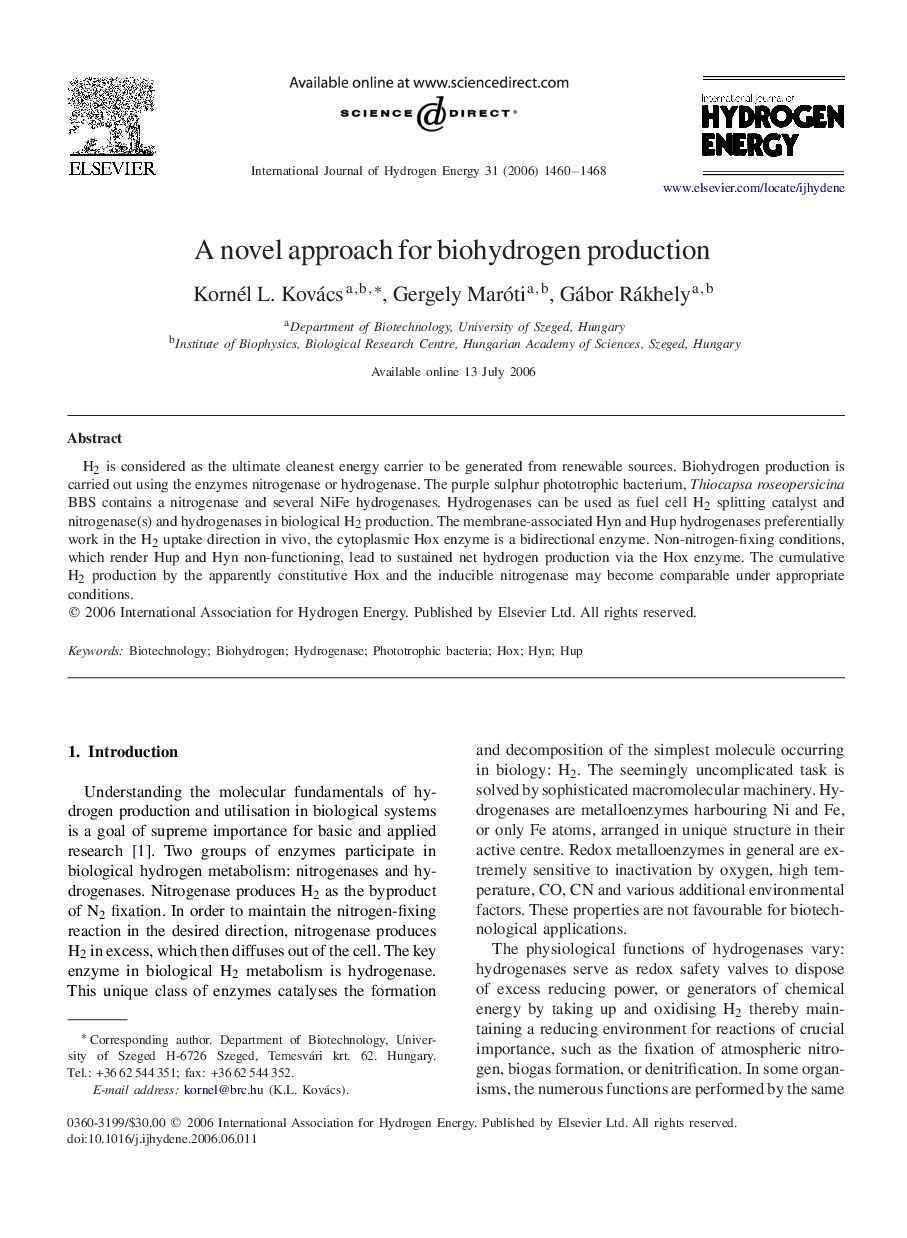| Article ID | Journal | Published Year | Pages | File Type |
|---|---|---|---|---|
| 1281993 | International Journal of Hydrogen Energy | 2006 | 9 Pages |
H2 is considered as the ultimate cleanest energy carrier to be generated from renewable sources. Biohydrogen production is carried out using the enzymes nitrogenase or hydrogenase. The purple sulphur phototrophic bacterium, Thiocapsa roseopersicina BBS contains a nitrogenase and several NiFe hydrogenases. Hydrogenases can be used as fuel cell H2 splitting catalyst and nitrogenase(s) and hydrogenases in biological H2 production. The membrane-associated Hyn and Hup hydrogenases preferentially work in the H2 uptake direction in vivo, the cytoplasmic Hox enzyme is a bidirectional enzyme. Non-nitrogen-fixing conditions, which render Hup and Hyn non-functioning, lead to sustained net hydrogen production via the Hox enzyme. The cumulative H2 production by the apparently constitutive Hox and the inducible nitrogenase may become comparable under appropriate conditions.
